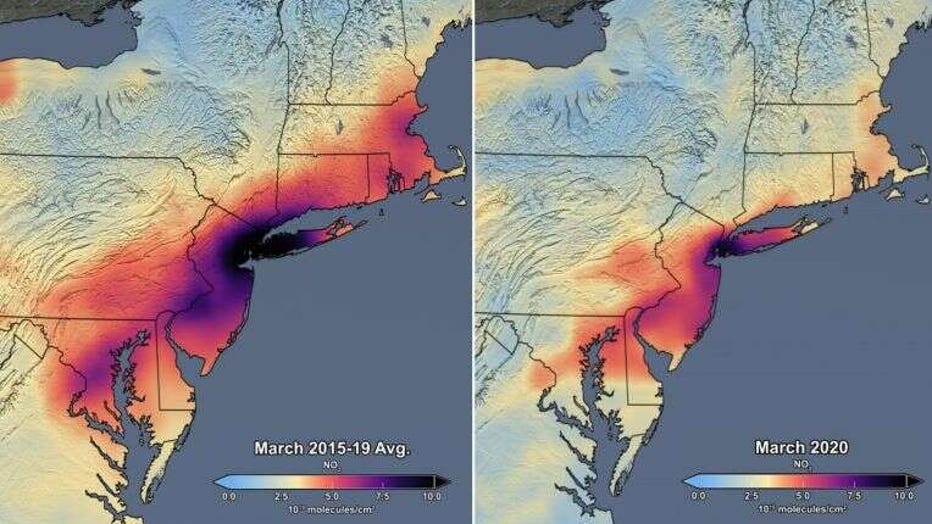Coronavirus lockdown results in 30 percent air pollution drop in northeastern US, NASA says
NEW YORK -- New York State is the worst hit in the U.S. by the coronavirus outbreak, with at least 161,807 cases and 7,067 deaths as of Friday morning. New Jersey is the second worst-hit state, with 51,027 cases and 1,709 deaths as of Friday morning.

“Though variations in weather from year to year cause variations in the monthly means for individual years, March 2020 shows the lowest monthly atmospheric nitrogen dioxide levels of any March during the OMI data record, which spans 2005 to the present,” explains NASA on its website. “In fact, the data indicate that the nitrogen dioxide levels in March 2020 are about 30% lower on average across the region of the I-95 corridor from Washington, DC to Boston than when compared to the March mean of 2015-19. Further analysis will be required to rigorously quantify the amount of the change in nitrogen dioxide levels associated with changes in emissions versus natural variations in weather.”
NASA adds there are likely differences in nitrogen dioxide levels measured from space and measurements made at ground level. Satellites that measure nitrogen dioxide cannot see through clouds, the space agency explains, adding that its data shows pollution levels for days with low cloudiness.
With mass lockdowns in place across the globe, a number of studies have said that the coronavirus pandemic is having a major impact on pollution across the globe.
“In California, the shutdown of businesses and activities related to #COVID19 has led to a decrease in nitrogen dioxide concentration,” NASA tweeted earlier this week.
Researchers used data from the European Space Agency’s Sentinel-5P satellite to track the concentrations of nitrogen dioxide.
The European Space Agency also released satellite images that showed reductions in nitrogen oxide levels in several major cities across Europe.
In the U.K., a recent report by solar power specialists The Eco Experts estimates that the country’s CO2e (carbon dioxide equivalent) emissions are set to drop by 28.22 million tonnes over the 12-week period following the implementation of social distancing measures on March 19.
As of Friday morning, at least 1.6 million coronavirus cases have been diagnosed worldwide, at least 466,299 of which are in the U.S. The disease has accounted for at least 96,787 deaths around the world, including at least 16,686 people in the U.S.
Why social distancing can save lives amid COVID-19 pandemic
Social distancing is not only about preventing the illness itself, but rather, slowing the rate at which people get sick.
Read updates at FOXNews.com.

